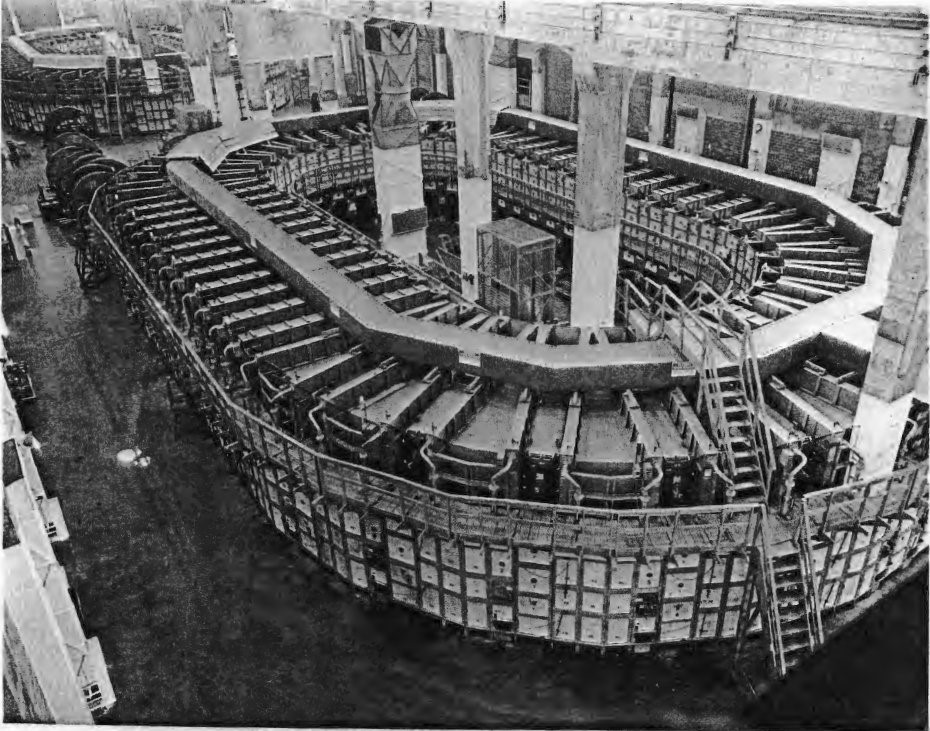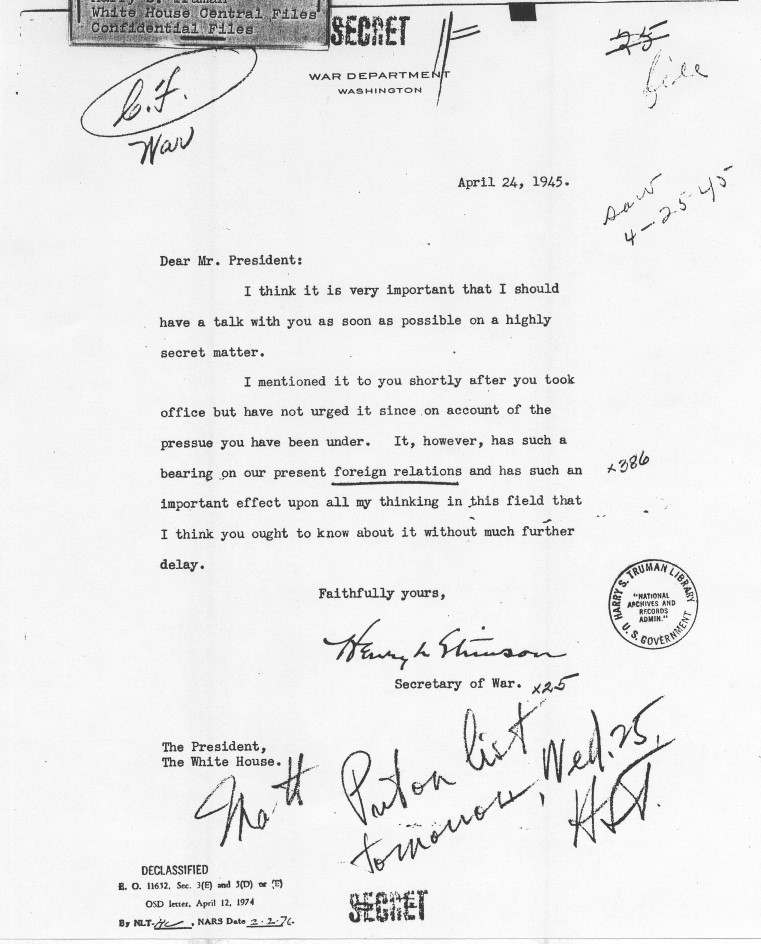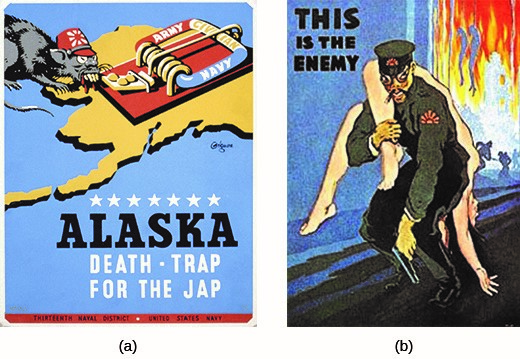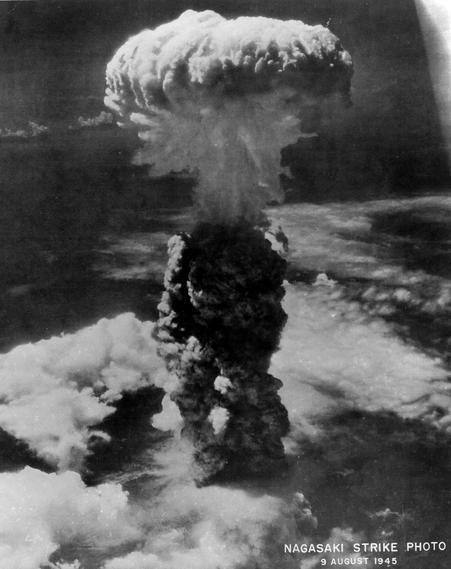Table of Contents |
German scientists learned how to split uranium atoms in 1939. This discovery led to the creation of the atomic bomb. Albert Einstein, who immigrated to the United States in 1933 to escape the Nazis, urged President Roosevelt to launch an atomic research project. Roosevelt agreed, and in late 1941 the program received its code name: the Manhattan Project.
The possibility that Germany might develop an atomic bomb first influenced Roosevelt’s decision to begin the Manhattan Project. However, German scientists had stopped trying to develop an atomic bomb because Germany lacked the resources to do so while fighting a two-front war against the Allies. The United States was unaware that the Germans had abandoned their bomb development project.
The Manhattan Project, on the other hand, had plenty of support: money, manpower, and resources.
The project required machinery, plants, and material that were only available in the United States. The project also benefited from public works projects carried out by New Deal work relief agencies.
EXAMPLE
A uranium extraction facility at Oak Ridge, Tennessee, used electricity and infrastructure developed by the Tennessee Valley Authority (TVA). The TVA was a New Deal program that built dams on the Tennessee River to provide hydroelectric power to the region.
Scientists who worked on the Manhattan Project were supported by federal funding and infrastructure. The fact that the United States had not experienced the wartime devastation and destruction that impacted Europe and Asia enabled the project to advance quickly.
Scientists at Los Alamos, New Mexico, successfully tested an atomic device in July 1945. The United States had invested a significant amount of money and manpower into the development of this weapon. Now the president would decide whether to use it against an enemy.
Rather than assessing a single decision to drop the atomic bomb, historians often examine the series of decisions that led to the use of the bomb. The president and his advisors considered a number of factors before they decided to use the weapon.
Harry Truman knew nothing about the Manhattan Project until he became president following the death of Franklin Roosevelt in April 1945.

Truman may not have comprehended the destructive capabilities of the atomic bomb. Some of the scientists who built the bomb were surprised by its power, and they expressed concern about its military use.
On July 17, 1945—1 day after the first successful test of the atomic bomb in New Mexico—a small group of project scientists sent a petition to President Truman. They asked him to consider the “moral responsibilities” when deciding whether to use the atomic bomb. Here is an excerpt from their petition:
Petition to President Truman From Manhattan Project Scientists
“The development of atomic power will provide the nations with new means of destruction. The atomic bombs at our disposal represent only the first step in this direction, and there is almost no limit to the destructive power which will become available in the course of their future development. Thus a nation which sets the precedent of using these newly liberated forces of nature for purposes of destruction may have to bear the responsibility of opening the door to an era of devastation on an unimaginable scale.”
Despite concerns about the military uses of atomic power, the use of the atomic bomb as a way to end World War II gained prominence during the summer of 1945, as the war against Japan continued.
In deciding whether to drop the bomb, Truman and his advisors considered the experience of the U.S. armed forces in fighting the Japanese, particularly the atrocities committed by Japanese soldiers against captured Americans.
EXAMPLE
Following the surrender of American and Filipino forces in the Philippines in early 1942, approximately 650 American soldiers lost their lives during the “Bataan Death March.” Thousands more died from disease and starvation in Japanese prisoner-of-war camps.The fact that Japanese soldiers and civilians often refused to surrender to U.S. forces as they advanced toward Japan factored into the deliberations on the use of the atomic bomb. During the Battle of Saipan (1944), several thousand Japanese soldiers and civilians committed suicide by jumping off a cliff rather than surrender to the Americans.
Toward the end of the war, almost 4,000 Japanese pilots died in kamikaze, or suicide, attacks against U.S. ships. Americans saw the attacks as proof of the irrationality of Japanese martial values and mindless loyalty to the Japanese emperor.
U.S. military officials knew many Japanese soldiers and civilians would die rather than surrender when the United States invaded Japan. War planners estimated that as many as 250,000 American soldiers would die in the invasion—one more factor that Truman took into account while considering his decision.
The war in the Pacific intensified racist, anti-Japanese sentiment in the United States, as displayed by wartime propaganda.

Historians have focused on two additional factors that impacted the decision to drop the atomic bomb: concerns about the Soviet Union and the bombing of civilians during previous wars.
When the war in Europe ended, the Soviet Union agreed to assist the United States in the war against Japan. Some American officials worried that the Soviets would occupy—and seize—territory as they fought the Japanese in Asia.
Historians have found evidence that James F. Byrnes, the secretary of state from 1945 to 1947, urged Truman to drop the atomic bomb on Japan as soon as possible—to end the war and to prevent Soviet expansion in Asia. Based on this evidence, some historians argue that the United States dropped atomic bombs on Japan as a warning to the Soviet Union, thus setting the stage for the Cold War.
By 1945, some war planners no longer considered moral questions regarding the bombing of civilians. In Europe, Nazi Germany targeted civilian populations when it bombed Great Britain. The British and, later, the Americans returned the favor during air raids on Germany.
EXAMPLE
In February 1945, a joint Anglo-American bombing raid killed 35,000 civilians in the German city of Dresden.As American forces drew closer to Japan, the U.S. Air Force bombed Tokyo and other Japanese cities. Admiral William Halsey spoke for many Americans when he urged those under his command to “Kill Japs! Kill Japs! Kill more Japs!”
The United States and its allies sought the unconditional surrender of the Axis Powers. This required the defeat of the civilian population as well as the armed forces. The bombing of towns and cities destroyed vital infrastructure and lowered civilian morale. Both were necessary to secure victory.
Additional Resource
Visit the Harry S. Truman Library and Museum and see the “Decision to Drop the Bomb” exhibit.
All of the factors noted above influenced President Truman’s decision to drop the atomic bomb. Beginning in the spring and summer of 1945, military officials selected potential targets.
Hiroshima, the headquarters of the Japanese Second Army and the communications and supply hub for southern Japan, was chosen as the first target. At 8:15 a.m. on Monday, August 6, 1945, the “Enola Gay,” a B-29 named after its pilot’s mother, dropped an atomic bomb named “Little Boy” on the city.
Survivors, who were eating breakfast or preparing for school at the time, recalled seeing a bright light and then being blown across the room. The intense heat of the blast melted stone and metal and ignited fires throughout the city. One survivor remembered watching his mother and brother burn to death as fire consumed their home. Within an hour of the bombing, radioactive “black rain” began to fall on the city.

Later that day, President Truman released a statement informing the American people of what had occurred. Here is an excerpt from that statement:
President Truman on the Bombing of Hiroshima
“The Japanese began the war from the air at Pearl Harbor. They have been repaid manyfold. And the end is not yet. With this bomb, we have now added a new and revolutionary increase in destruction to supplement the growing power of our armed forces . . . .
We are now prepared to obliterate more rapidly and completely every productive enterprise the Japanese have above ground in any city. We shall destroy their docks, their factories, and their communications. Let there be no mistake; we shall completely destroy Japan’s power to make war.”
When Japan refused to surrender after the bombing of Hiroshima, the United States dropped a second atomic bomb on Nagasaki, a major industrial center and the largest seaport in southern Japan.

At least 60,000 people were killed during the initial blast at Nagasaki on August 9, 1945.
The dropping of both bombs forced Japan to surrender. During the late stages of the war, members of Japan’s Imperial Council hoped to negotiate peace with the United States. Following the destruction of Nagasaki, however, Emperor Hirohito agreed to the U.S. demand that Japan surrender unconditionally. Although surrender was hateful to many Japanese people, Japan’s military forces had been defeated and bombing had reduced its cities and industries to rubble. The future of Japan looked bleak. Reconstruction, under the oversight of U.S. occupation forces, would be an enormous job.
Although the atomic bombs forced Japan to surrender, some Americans worried about other consequences.
After the second bomb was dropped, Samuel Cavert, secretary of the Federal Council of the Churches of Christ in America, sent a telegram to President Truman stating that “many Christians” were “deeply disturbed” by the use of atomic bombs.
Truman’s reply, in which he indicated that war sometimes required ruthless action, was blunt:
President Truman on the Use of Atomic Bombs in Japan
“Nobody is more disturbed over the use of Atomic bombs than I am but I was greatly disturbed over the unwarranted attack by the Japanese on Pearl Harbor and their murder of our prisoners of war. The only language they seem to understand is the one we have been using to bombard them.
When you have to deal with a beast you have to treat him as a beast. It is most regrettable but nevertheless true.”
The Manhattan Project exemplified America’s ability to mobilize and produce the weapons necessary to defeat the Axis Powers during World War II. Following the war, the United States would never leave the global stage. Its early mastery of atomic power made the United States the dominant force in the postwar world.
Source: This tutorial curated and/or authored by Matthew Pearce, Ph.D with content adapted from Openstax “U.S. History”. access for free at openstax.org/details/books/us-history LICENSE: CREATIVE COMMONS ATTRIBUTION 4.0 INTERNATIONAL